Your Backyard Wildlife Habitat: Plan and Certify Your Butterfly Garden Habitat
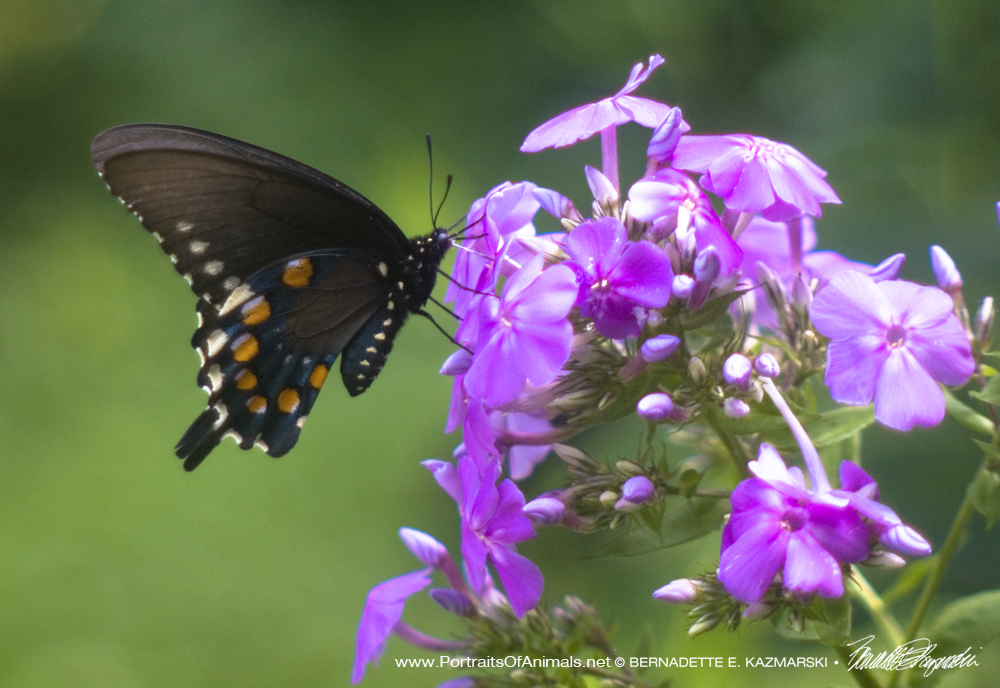
In November 2016 the North American Butterfly Association (NABA) announced its Butterfly Habitat Network (BHN), an effort you can assist in, and you can have your butterfly habitat certified too.
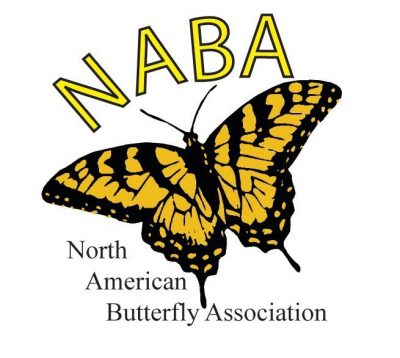
Butterflies aren’t always recognized as critical pollinators of native plants, and in the caterpillar stage they are a major food source for nesting songbirds. According to NABA, “habitats critical to butterflies are essential to nesting waterfowl, neotropical migratory birds, upland game birds and others.” Their slogan, “If we can save butterflies, we can save ourselves®” illustrates the concept that “adequate, well-cared for space for the wild others of this planet will ensure survival and quality of life for human beings.”
NABA’s intent is to help others create, enhance and protect habitat specifically for butterflies. The BHN program’s goal is to gather decades of data from butterfly counts as well as data from natural history investigations, residential gardening programs and regional activities from the National Butterfly Center and other sources and work on the landscape level to benefit butterflies and other pollinators.
Certify Your Butterfly Habitat
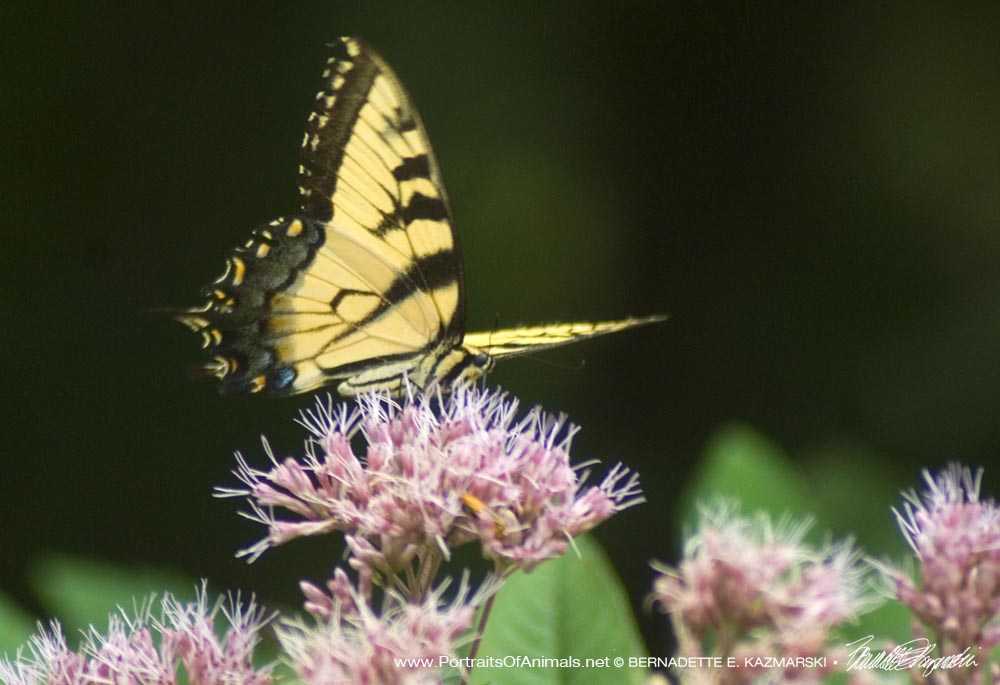
I’ve outlined how my backyard wildlife habitat was certified so you are probably familiar with that process: providing natural food sources, water, shelter and nesting places for wildlife, whatever species they may be. NABA will now also provide guidance for developing a butterfly habitat and certify that it provides your native butterfly species’ particular needs for all life stages of the butterfly including caterpillar host plants and adult nectar sources. Gardens need not always be in your back yard either, but can be part of municipal plantings or plantings at businesses, schools or other private or public places that want to host a habitat.
From the NABA website these are the three requirements for certification:
- At least three different native caterpillar food plants must be grown, preferably more than one plant of each selected species.
- At least three different native butterfly nectar sources must be grown, preferably more than one plant of each selected species.
- The use of pesticides is discouraged. Pesticides can kill butterflies as well as other important pollinators.
For a map of where North American Butterfly Association Certified Gardens are saving habitat for butterflies, click HERE. To certify your garden, please complete this FORM.
Read more about the Butterfly Habitat Network or go to www.naba.org to find information about the network, butterfly gardening, butterfly counts, butterfly identification and more.
Planning a Butterfly Garden
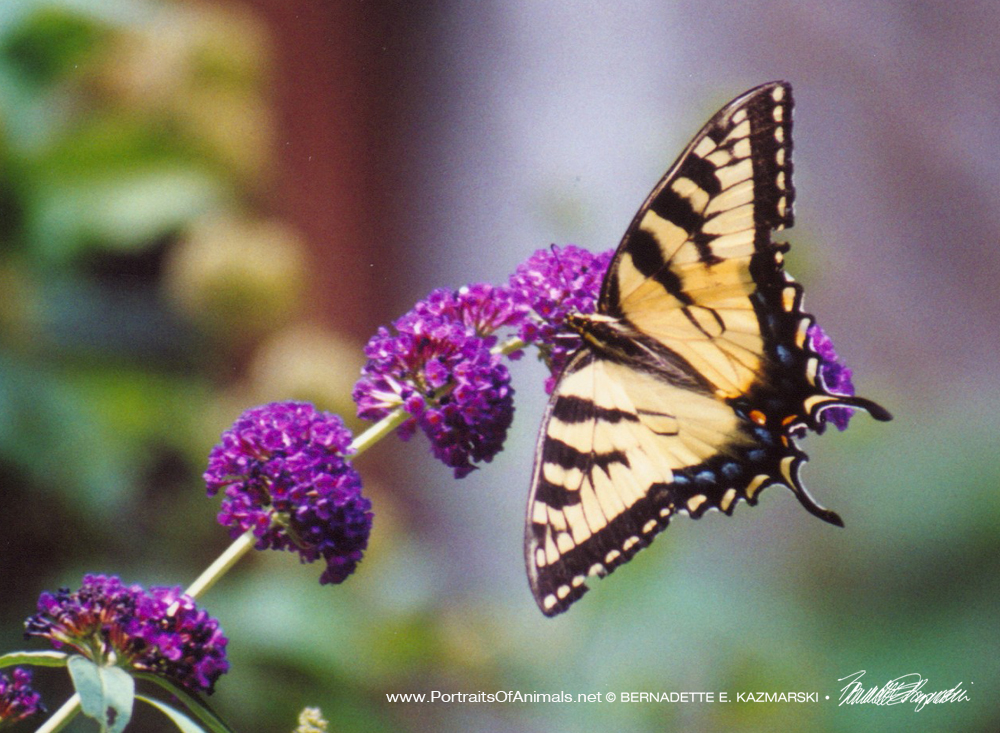
When my wild black cherry tree came down last year it flattened a good bit of my habitat including my vegetable garden and my “meadow habitat”, the partly sunny area in the back yard where I had a number of native plants growing for pollinators. This year I get to start all over again, and though I loved that cherry tree it had grown to shade nearly half of my yard. Flowers, including natives, may grow in shady areas but need sun to bloom enough to attract and feed pollinators, birds and me and my camera and sketch book. Now I have twice as much sun, and with the guidance on the NABA site I can more carefully plan my butterfly garden and have it certified. I am really looking forward to this and will, of course, be reporting from the back yard.
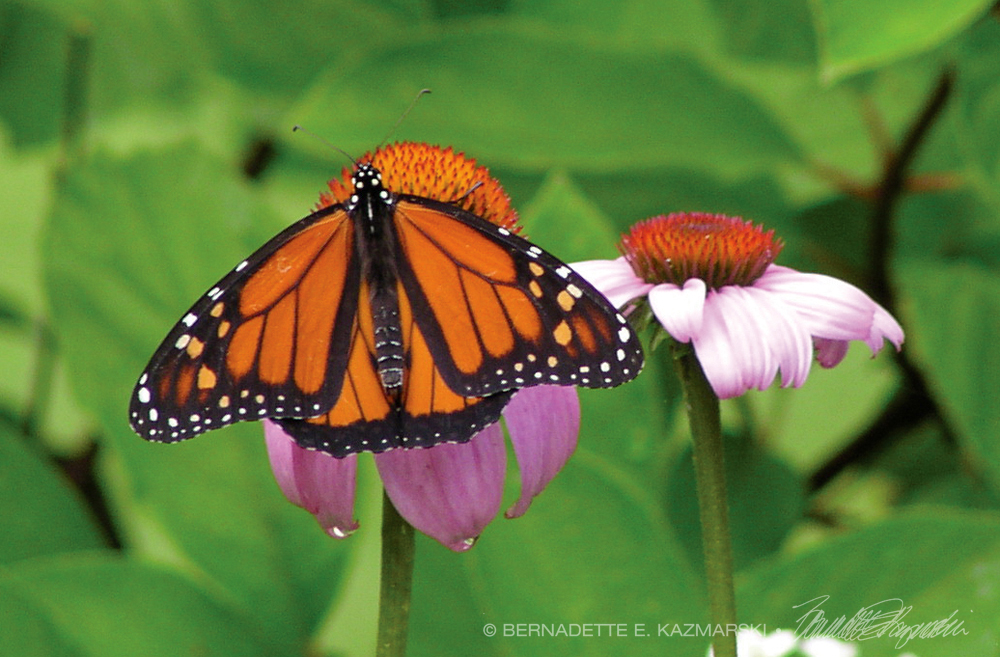

A butterfly garden may seem like a luxury item, pretty, but not as necessary as other parts of your backyard wildlife habitat in providing sustenance to wildlife. But while butterflies may seem to be colorful little flitting decorations they also play their role in their relative ecosystem as pollinators and as food for various species, and along with other birds, animals and insects their habitats have been destroyed in various ways. It’s worth including plants to attract and support them in your habitat even if all you get to see is the beauty of all those lovely creatures.
Aa butterflies visit one plant after another in the same way bees do they also play their role in pollination—not as much as bees, but in scholarly articles scientists admit there’s not a whole lot of research into the role butterflies play in pollination.
Planning a butterfly garden
As with developing any habitat that attracts once creature or another, designing and developing a butterfly garden is guided by knowing your native butterfly species’ particular needs for all life stages of the butterfly:
- Places for butterflies to lay eggs
- Food plants for larvae or caterpillars
- Places to form chrysalides to transform themselves into the color adult butterfly
- Nectar sources for adult butterflies
Each of these activities is dependent on particular species of plants. You can go a long way toward meeting these requirements by finding out what adult species will eat and just as importantly what their caterpillars will eat.
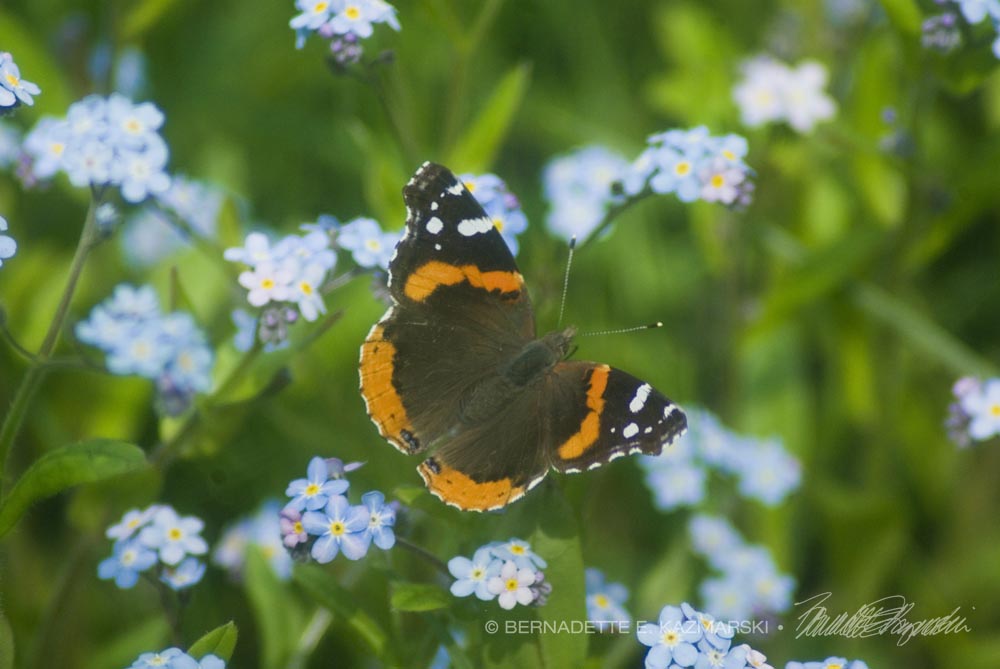
Get to know your native butterflies
Just as most other creatures that inhabit your habitat, butterfly species differ all over each continent, and sometimes are specific to only one area. They also migrate enormous distances each fall, so you may host a species that doesn’t necessarily live in your area. You’ve probably seen plenty of butterflies but don’t know what they are, or possibly know the best known butterflies, like the monarch.
To find what species are native to your area you can start with your state’s environmental organization, a local college biology or environmental program, or your state’s extension agency to find searchable resources on the internet. Once you establish the area your habitat belongs to you can find a guidebook or app that corresponds and look up what butterflies are typically found in your area and you can begin getting to know them both from what you already observe in your yard and other places, and learning from the guidebook what species to look for.
It’s highly likely you’ll also find a butterfly club near you, and even many garden centers and landscapers know their butterfly species. Also visit local conservancies, botanic gardens, parks, trails and others’ yards to see what butterflies you may find.
I have a number of pamphlets and guidebooks for butterflies but with all the species out there how do you find just the one you are looking for? Online resources like Gardens With Wings can walk you through the details to note on the butterfly you are looking for and narrow your choices down to a narrow category.
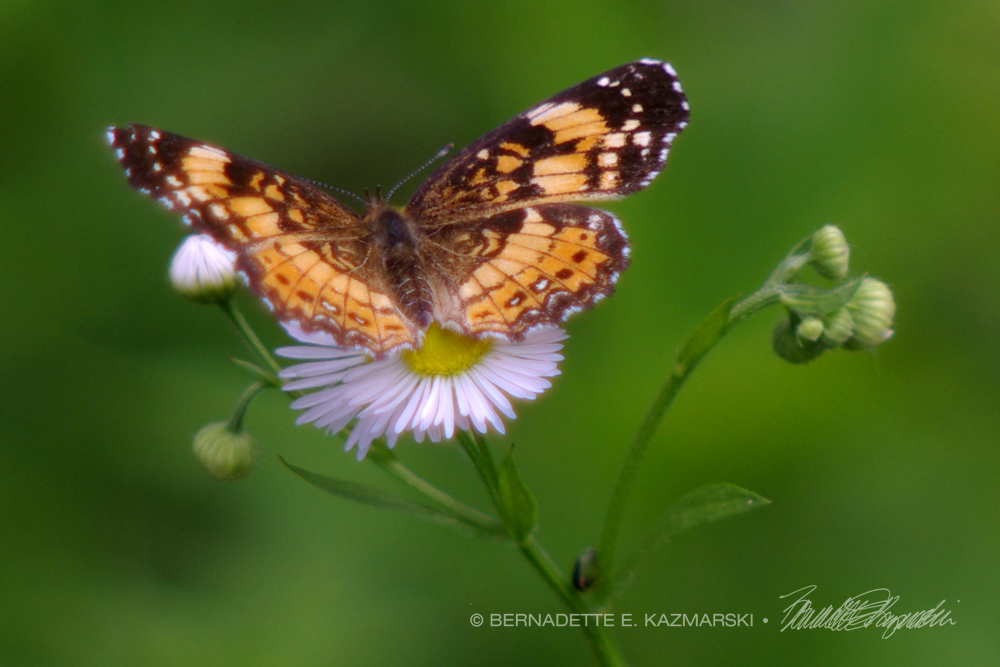
Get to know what plants they like
As humans and basically omnivores of the food and resources around us, we forget that most species don’t have such wide-ranging tastes. Butterflies and the plants they use evolved together, and they really only recognize a limited number of plants as their home and food source. As you find and identify your butterflies, also note the flowers they visit to help you determine what you may want to grow in your own yard, note the plant’s growing conditions and size and bloom time. All this will be critical for determining if that plant with grow well in your yard.
I have many guidebooks for native plants as well, but an online resource like the Ladybird Johnson Wildflower Center for the United States has a huge comprehensive database of plants by region and state that will help you identify the plants you see and the ones you need to know.
You may know some of these plants as “weeds”. In my garden, everything has its place and nothing is a “weed”, though some plants may overpopulate or not be as desirable as another, and you may find goldenrod and joe-pye weed, often seen in the ditch along the road, are stunning in autumn when all else is fading. Give non-conventional plants a chance. My neighbors think my yard looks like a park! For those in the US here is a list of native plants by region.
General flower types and colors adult butterflies like
Nearly all butterflies have the same general preference for plant type and flower shape and color, so that narrows the choices. Adult butterflies are attracted to red, yellow, orange, pink and purple flowers that are flat-topped or clustered and have short flower tubes. Phlox is a good example of this type of flower.
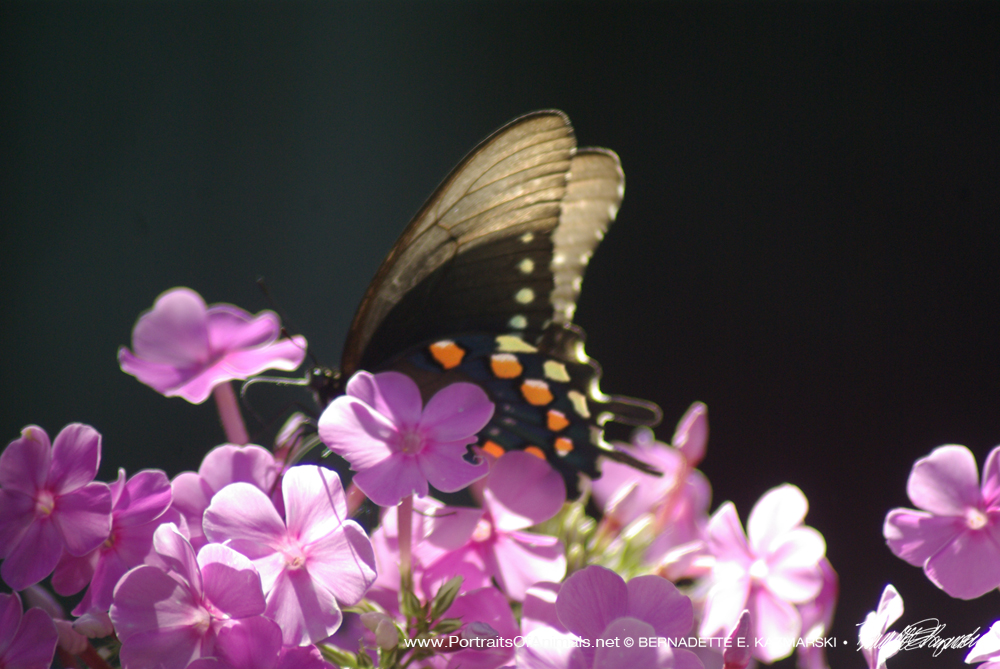
Butterfly weed, appropriately named, is another.
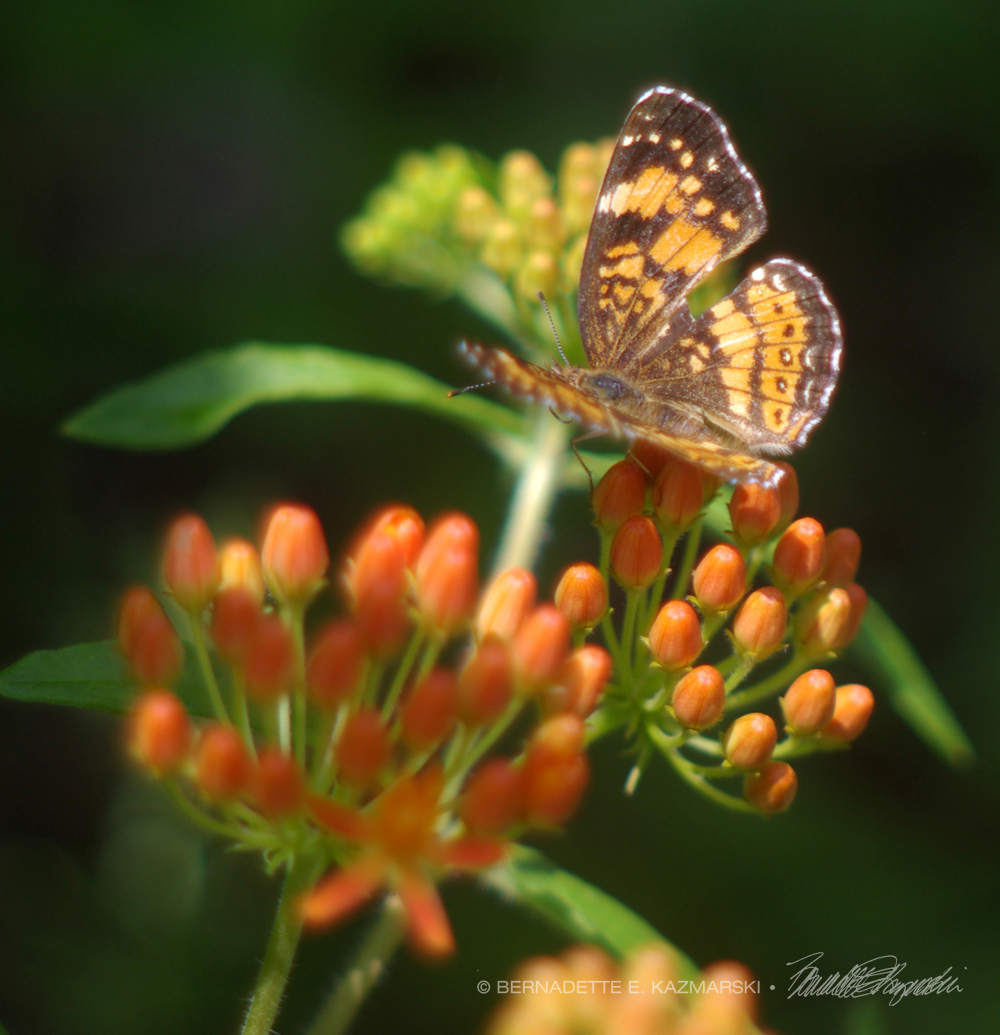
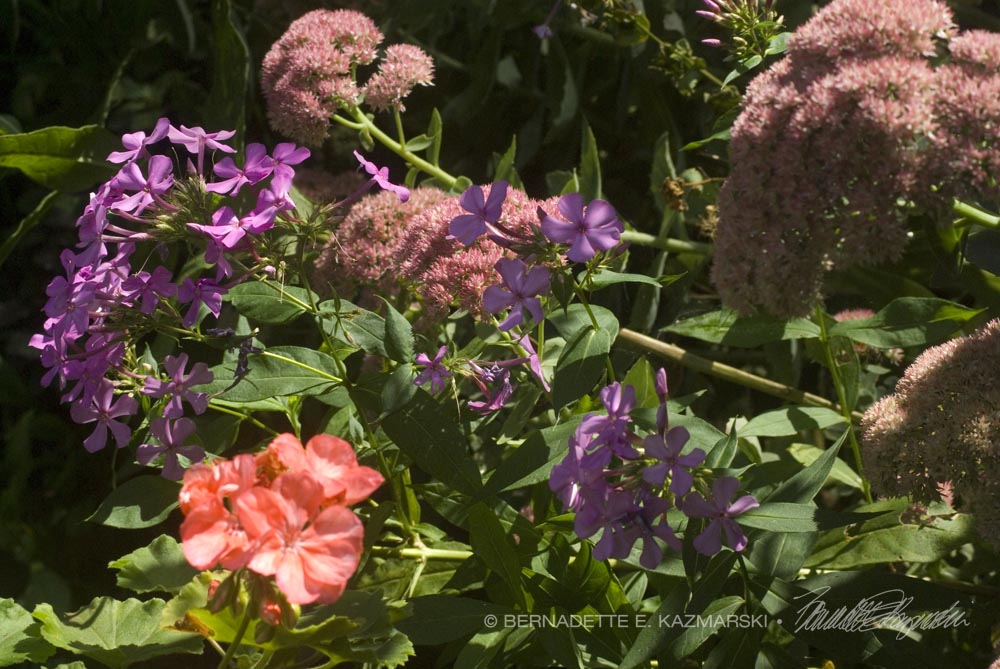
Planning your site for life stages
You don’t need to cluster your butterfly plants together in a single garden, you can easily mingle them among other plants and butterflies will find them. But whether they are in a garden all their own or plants are mixed among your other plantings and even your vegetable garden they should bloom successively so that there is always something blooming and nectar available to the butterflies. Outside of this general preference different species of butterflies use different species of plants for each cycle of their lives. You can’t provide them all, but with careful choices you can provide for many while creating a garden that you love to look at as well.
Adult butterflies
Adult butterflies are what most people think of when they plan a butterfly garden and focusing on the plants they like goes a long way to meeting their needs and bringing you enjoyment in looking outside and seeing a colorful garden full of fluttering colorful wings. Adults generally only feed in the sun, so you want to plan what you will provide for them for sunny areas only, and this also helps to ensure maximum blooms and nectar. The plants should receive full sun from mid-morning to mid-afternoon. To help match butterfly species with the plants they visit for nectar, here is a handy list of butterfly species and the plants they like.
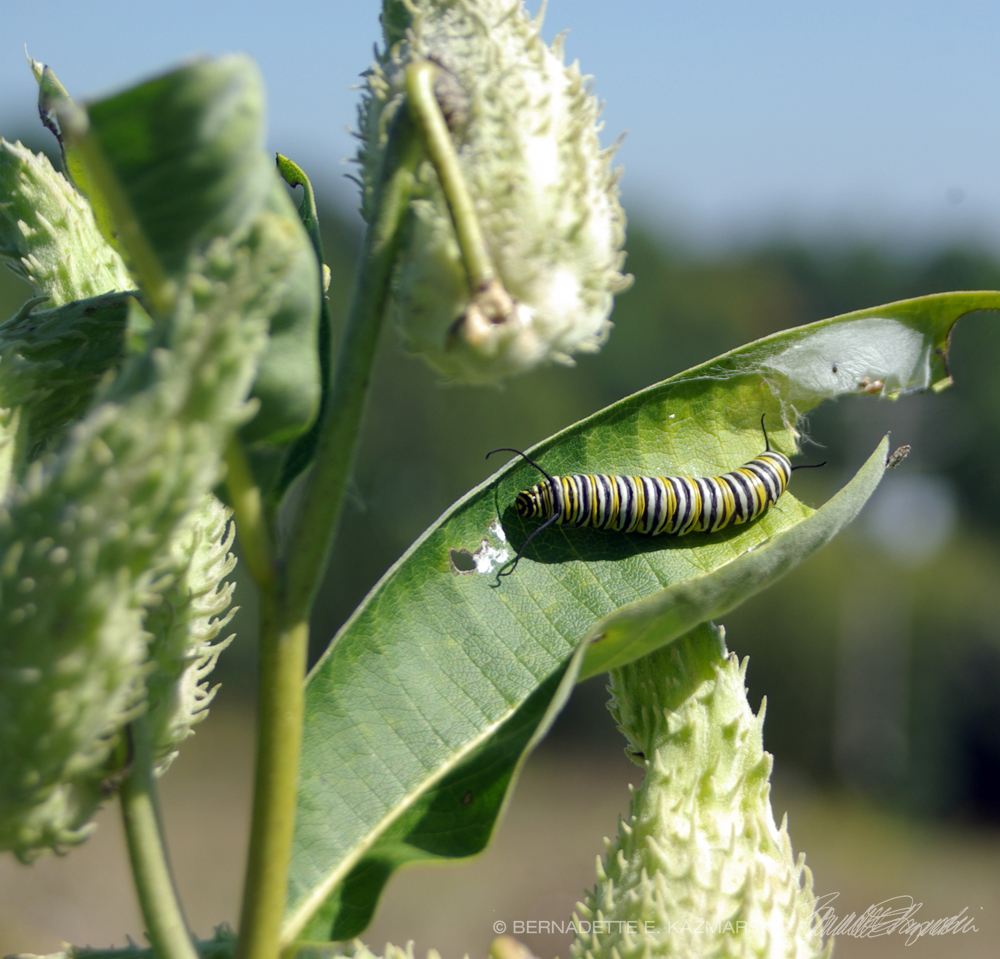
Where adults lay eggs and caterpillars eat
Butterfly caterpillars are much more particular than their adult form, and obviously they can’t flit around and find something they like better. Adult butterflies tend to lay their eggs on the plants the caterpillars will eat as they develop, so getting to know the plants preferred for caterpillars takes care of the needs of two of the life stages, eggs and larvae or caterpillars.
Most people know, for instance, that monarch caterpillars will only eat milkweed—referring back to we omnivorous humans, monarch caterpillars are biologically incapable of moving on to another plant to nibble on the leaves because it just won’t recognize that as food, and likely the plant wouldn’t provide the proper nourishment even if the caterpillar decided to eat it. In addition to this basic arrangement of all butterfly caterpillars who are matched with host plants, milkweed contains bitter alkaloids that impart a bitter taste to the monarch caterpillar, and caterpillar-consuming predators like birds have evolved to recognize the monarch as inedible because of this. It’s a natural defense against predators. Here is another article with more information on monarch caterpillars, and the site has a huge amount of information on butterfly caterpillars.
Note: after all this talk about the wonders of milkweed, please note that the plant can be very dangerous to humans and animals. Its sap, which we remember contains alkaloids, can damage eyes and mucous membranes, and a number of other chemicals such as a natural form of steroid and another that can actually stop your heartbeat—or your pet’s. Its bitter taste is a natural defense to us and our pets and other animals as well so one curious bite would probably stop any future exploration, but you should also try to keep the plant out of reach of exploring fingers and teeth.
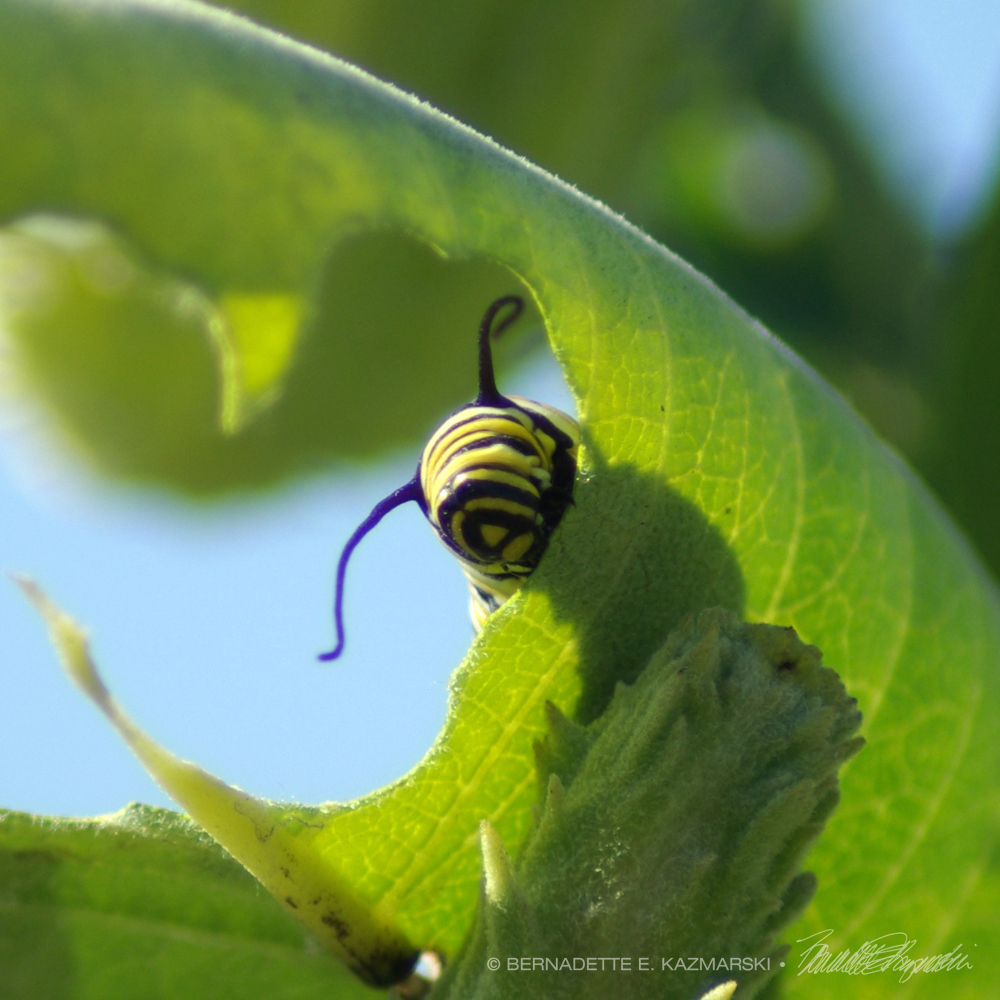
The chrysalis
Though caterpillars eat pretty much only one plant, they leave that plant and find what they feel is a safe and appropriate place to build their chrysalis, or cocoon as we also know it. This may be another plant, or it may be the underside of a table on your deck. They have no need for food at this time as their constant munching in the larval stage has filled them with all the nourishment they need to build their chrysalis and live through the time of transition. In this case, you don’t need to plant anything in particular, but keeping a quiet and unworked area in your yard will welcome them to stay for this period of development. Plants that have only foliage work well for this, and even the same dense shrubs that protect your birds in winter will also provide a shaded, safe and quiet spot for a butterfly’s cocoon.
But in butterfly development, even the caterpillar stage has individual stages within it. Read this article to review more details of the complete development of a monarch.
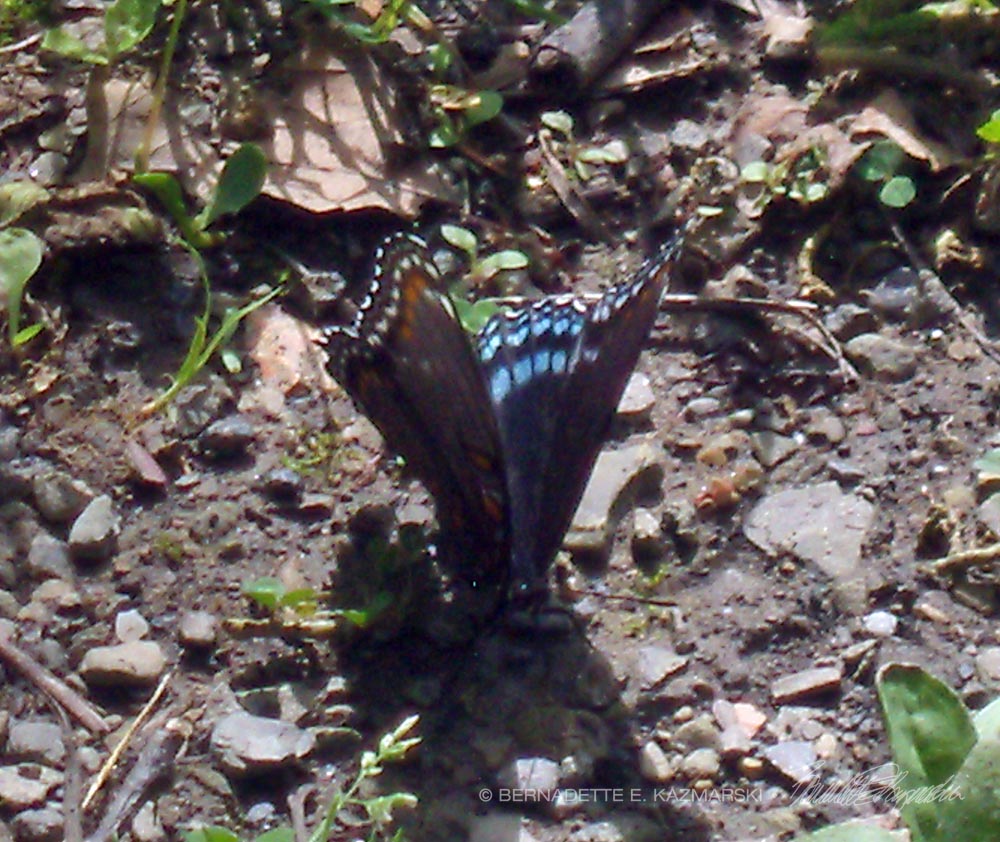
Providing for adults—water and sunlight
Every living thing needs water, butterflies included. They’ll drink dew and rainwater, and certain life stages get moisture from what they eat, but especially in midsummer when things tend to dry up it’s good to supplement this. Most of us have bird baths and we can see how birds use them, but how do we make water available to our butterflies?
One of the ways I’ve done this for butterflies and bees and other beneficial insects is to sprinkle the garden early in the morning during the hottest days of the year when there has been no rain. This is not a heavy watering, and much of the water won’t even reach the ground but so that the leaves of the plants are covered with water droplets. Bees and butterflies and other insects land on the leaves and drink from the droplets.
Aside from that you can set around little watering dishes that consist of a flat container an inch or so deep, filled with pebbles or medium-sized rocks. Pour water into this so that it fills in around the rocks but does not cover them. Butterflies and bees will land on the rocks and sip between the rocks.
Another way to do this is to provide a “puddle” for butterflies to congregate. If a shallow puddle is in soil they can absorb minerals from the soil. You can also create a space for them with another shallow pan that contains coarse sand, settled into the soil in your yard, and kept moist.
Adult butterflies also need places to rest and orient themselves in the sun. You’ll often see a butterfly on a leaf or a rock or your deck railing with its wings completely spread, holding very still. They will orient themselves by the position of the sun and rest, warming their wings.
Keep things organic
Butterflies are sensitive to all sorts of chemicals in both adult and caterpillar stages, even some that we consider “safe” like Bacillus thuringiensis or BT, which I use on eggplants and other plants to deter the insects that chew on the leaves. Be careful what you apply anywhere in your yard, of course, but especially try to go completely nature when you are attracting butterflies.
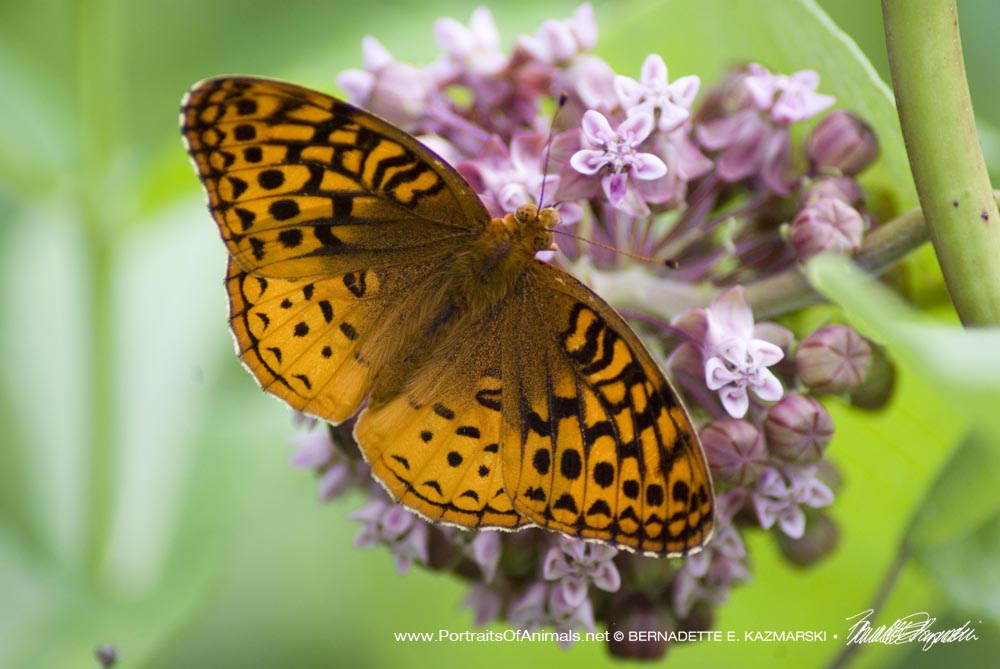
. . . . . . .
 ButterflyGardenClick here to download your guide to beginning your Butterfly Garden.
ButterflyGardenClick here to download your guide to beginning your Butterfly Garden.
As a PDF, great for computers.
As a JPG, easily viewed on mobile devices.
. . . . . . .
References in this article
Wild Bee and Butterfly Declines
Ladybird Johnson Wildflower Center
What Do Monarch Caterpillars Eat?
Everyone Should Be Careful With Milkweed
Do Monarch Caterpillars Eat Anything Besides Milkweed?
Resources
North American Butterfly Association (NABA)
How to Start a Vegetable Garden: Home Grow Your Own Veggies from Yard Day
For more information
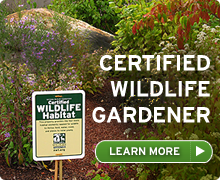
My backyard wildlife habitat was certified through National Wildlife Federation’s program in 2003, and their site is still one of my favorite references for information. Visit and read about it, and begin planning your own and be certified!
Read the entire series of introductory articles:
An Introduction to Backyard Wildlife Habitats
What’s in Your Backyard? The First Step in Planning Your Backyard Wildlife Habitat
What Else is in Your Backyard: The Fauna That Fill It
Bringing it All Together: Enhancing and Developing Your Habitat
. . . . . . .
Also read about my art, photography, poetry and prose inspired by my backyard wildlife habitat:
Art Inspired by My Backyard Wildlife Habitat
Photography Inspired by My Backyard Wildlife Habitat
Poetry Inspired by My Backyard Wildlife Habitat
Prose Inspired by My Backyard Wildlife Habitat
Read other articles in the category of Your Backyard Wildlife Habitat
If you’re interested in more information about Backyard Wildlife Habitats, choose the category Your Backyard Wildlife Habitat for a list of articles in this series, visit the Backyard Wildlife Habitat page for a series articles on developing your habitat or choose the category Backyard Wildlife Habitat to find all posts sharing the articles, photos, paintings and sketches, poetry and prose I’ve done that were inspired but my backyard.
All images and text used on this site are copyrighted to Bernadette E. Kazmarski unless otherwise noted and may not be used without my written permission, although links to your site are more than welcome and are shared. Please ask if you are interested in using and image or story in a print or internet publication. If you are interested in purchasing a print of an image or a product including it, check my animal and nature website Portraits of Animals to see if I have it available already. If you don’t find it there, visit Ordering Custom Artwork for more information on a custom greeting card, print or other item. Subscribe to The Creative Cat Preview E-newsletter. © 2022 | www.TheCreativeCat.net | Published by Bernadette E. Kazmarski Weekly schedule of features: Sunday: Essays, Pet Loss, Poetry, The Artist’s Life Monday: Adoptable Cats, TNR & Shelters Tuesday: Rescue Stories Wednesday: Commissioned Portrait or Featured Artwork Thursday: New Merchandise Friday: Book Review, Health and Welfare, Advocacy Saturday: Your Backyard Wildlife Habitat, Living Green With Pets, Creating With Cats And sometimes, I just throw my hands in the air and have fun!

Copyright
Subscribe to my e-newsletter
PORTRAITS OF ANIMALS WEBSITE
FACEBOOK | TWITTER | LINKEDIN | PINTEREST | TUMBLR | INSTAGRAM | YOUTUBE| EMAIL
| PATREON
Art and Gifts featuring cats you know! Visit Portraits of Animals
~~~
Great Spangled Fritillary! from Portraits of Animals!
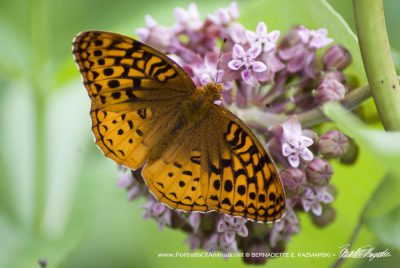
Great spangled fritillary, isn’t that a great name? I use it sometimes as a silly sort of interjection when I’m surprised. It really is this butterfly’s name, though, and I captured this photo of one intently feeding on really fragrant milkweed along the Panhandle Trail. This photo and many of the other butterfly photos in this post are available framed or unframed, on canvas or on paper on Portraits of Animals. You can find this photo in my gallery of Bird and Wildlife Photography.
© 2017 | www.TheCreativeCat.net | Published by Bernadette E. Kazmarski
—
Weekly schedule of features:
Sunday: Essays, Pet Loss, Poetry, The Artist’s Life
Monday: Adoptable Cats, TNR & Shelters
Tuesday: Rescue Stories
Wednesday: Commissioned Portrait or Featured Artwork
Thursday: New Merchandise
Friday: Book Review, Health and Welfare, Advocacy
Saturday: Your Backyard Wildlife Habitat, Living Green With Pets, Creating With Cats
And sometimes, I just throw my hands in the air and have fun!
—
PORTRAITS OF ANIMALS WEBSITE
FACEBOOK | TWITTER | LINKEDIN | PINTEREST | TUMBLR | INSTAGRAM | YOUTUBE | GOOGLE+ | EMAIL




Pingback: September Nature Desktop Calendar: Season of Plenty - Portraits of Animals
Pingback: May Nature Desktop Calendar: Monarch and Echinacea - Portraits of Animals
I know you must miss the cherry tree, but what an opportunity to begin anew! Lovely photos, as always!
Indeed! When I moved in here 27 years ago I didn’t know a thing about backyard habitats. Now I can move forward with that knowledge–and get all new photos!
These butterflies are awesome! Definitely will keep this in mind when planting my flower garden, Thanks!
Thanks for visiting Alison! A few for the butterflies, a few for the bees, and you get to enjoy it all.
Thank you for all of this wonderful information. You have given me guidance with what I want to do with my flower gardens this year.
Raylene, I’m so glad! You’ll have to share some photos of what you create!
Those butterflies are very pretty.
There are not a lot of flowers around our place.
We have a lot of slate and thin soil.
Mum still bought some seeds and has hope 😉
MOL!
Purrs Georgia,Julie and JJ
Nancy, I don’t have many flowers if I don’t work on it in this yard because of my position, facing north, and with a lot of shade. I couldn’t grow many things I wanted to unless I grew them in pots and moved them around. Without the tree it will make a difference. Try some container gardening where you can control the soil and hydration!